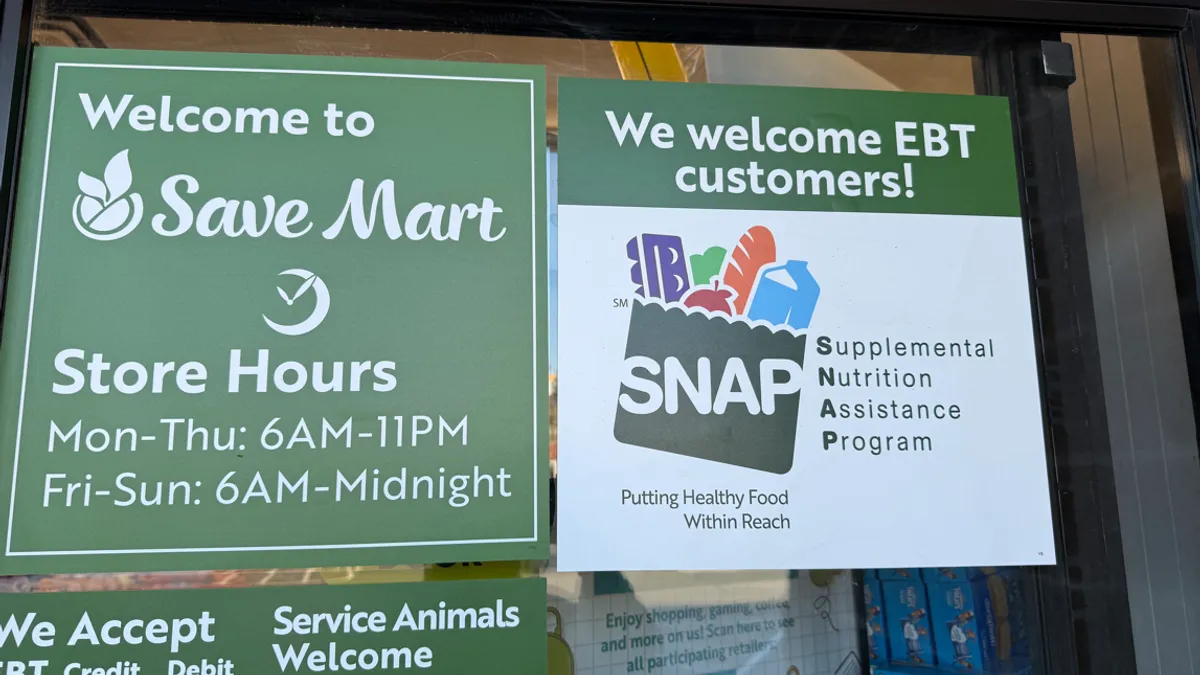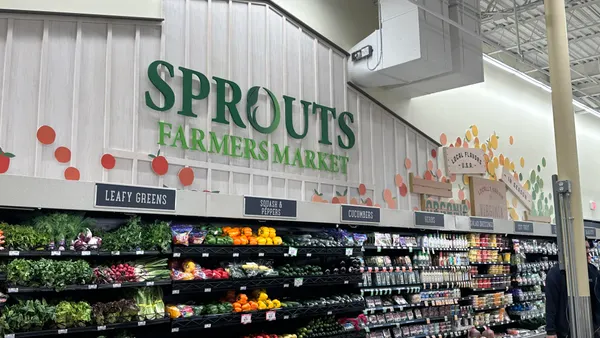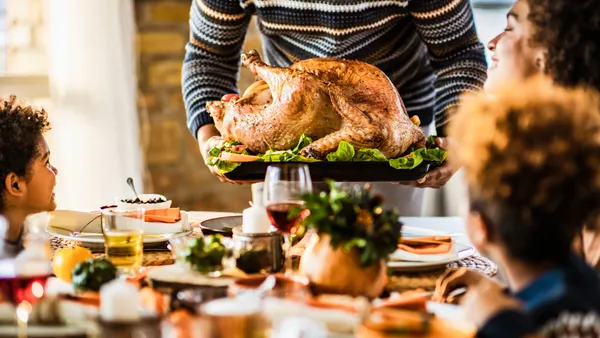Dive Brief:
- President Donald Trump announced tariffs on an additional $200 billion worth of Chinese goods coming into the U.S. Many of these products include agricultural foods, food additives and even packaging materials. The 10% tariff will go into effect this month and jump to 25% on Jan. 1.
- Grocery trade groups, led by the National Grocers Association (NGA) and the Food Marketing Institute (FMI), voiced their discontent, explaining that while retailers will do everything to absorb the costs, the already slim profit margins do not allow for much flexibility, Winsight reported. In fact, the publication noted that the Grocery Manufacturers Association urged the government exclude food and beverage items from the list of tariffs as the results will have serious impacts on manufacturers, farmers and consumers.
- In retaliation, an organized group known as Tariffs Hurt the Heartland — which sprang from Farmers for Free Trade — has spoken out against the taxes, arguing that they will do the most damage to the farmers and working families of America. The newly formed group is supported by farming, retail and several manufacturers associations.
Dive Insight:
When initial tariff increases were announced against China in June — 25% on imported steel and 10% on imported aluminum — U.S. beverage manufacturers estimated that a 20% import duty would cost them more than $512 million and a 30% increase would top $768 million. There was little doubt that these costs, along with the added repercussions of retaliation taxes from Mexico, Canada and the E.U. on U.S. consumers, would have to be passed on to shoppers.
The latest announcement from the White House is the most recent jab in the match between the Chinese and U.S. governments for tariffs on exported goods. Just the discussion last spring of a possible steel and aluminum tariffs forced China to crack down on import taxes for 128 U.S. products, most of which were in food and agriculture.
Although food and beverage lobbying groups have tried to pressure Trump to back down on the tariffs, so far they have been unsuccessful. If the tariffs remain in place, while the holidays may not be affected, ultimately consumers of all income levels will start to feel the hit after the new year. It's possible that once shoppers feel the sting of higher prices at grocery stores, shopping malls and other outlets, that that will add momentum behind the concerns being made by trade groups in the food industry.
“Every time this trade war escalates, the risk to U.S. consumers grows. With these latest tariffs, many hardworking Americans will soon wonder why their shopping bills are higher and their budgets feel stretched," said Matthew Shay, president and CEO of the National Retail Federation.
It could also have a long-term impact on U.S. farmers.
“As trade tensions escalate, and our ability to sell our goods to major markets diminishes, we're having to make long-term business decisions that could affect our farms for generations," Casey Guernsey, a spokesperson for Americans for Farmers & families told Business Insider. “Many family farmers are canceling new projects, selling their equipment and livestock, and even thinking about closing their operations entirely.”
The agricultural community began prepping for the repercussions back in July when the U.S. Department of Agriculture announced $12 billion in emergency funding for farmers hit by retaliatory tariffs from China and other countries. The plan was designed primarily to assist soybean farmers, dairy farmers and pork producers. But even with the help, many farming groups are skeptical that it will be enough — counting on U.S. consumers to buy enough pork, soybeans, dairy, wheat, cotton and corn to keep the agricultural system afloat.
For now, it's evident that farmers, retailers and consumers will be mired in a long-term period of uncertainty until more is known about how long the trade battle will linger and whether it will escalate further.













